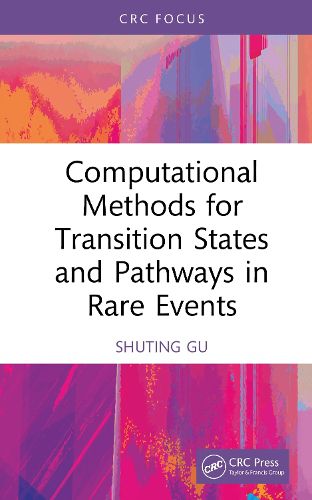Readings Newsletter
Become a Readings Member to make your shopping experience even easier.
Sign in or sign up for free!
You’re not far away from qualifying for FREE standard shipping within Australia
You’ve qualified for FREE standard shipping within Australia
The cart is loading…






Based on the calculation of transition states and the identification of transition paths, the book aims to provide a comprehensive guide to understanding and simulating rare events.
The author introduces both fundamental concepts of transition states and pathways and advanced computational techniques, focusing on Gentlest Ascent Dynamics (GAD) and its variants. In particular, she explores enhanced numerical methods such as the convex splitting method and the Scalar Auxiliary Variable (SAV) approach within the Iterative Minimization Formulation (IMF). In addition, the book applies these methods to real-world problems, highlighting the string method and the geometric Minimum Action Method (gMAM) for computing transition paths.
The book is written for researchers and practitioners in fields such as applied mathematics, physics, chemistry and computational science who are interested in the underlying mechanisms of rare events and their transition processes.
Chapter 3 and 4 of this book are freely available as a downloadable Open Access PDF at http://www.taylorfrancis.com under a Creative Commons Attribution-Non Commercial-No Derivatives (CC-BY-NC-ND) 4.0 license.
$9.00 standard shipping within Australia
FREE standard shipping within Australia for orders over $100.00
Express & International shipping calculated at checkout
Based on the calculation of transition states and the identification of transition paths, the book aims to provide a comprehensive guide to understanding and simulating rare events.
The author introduces both fundamental concepts of transition states and pathways and advanced computational techniques, focusing on Gentlest Ascent Dynamics (GAD) and its variants. In particular, she explores enhanced numerical methods such as the convex splitting method and the Scalar Auxiliary Variable (SAV) approach within the Iterative Minimization Formulation (IMF). In addition, the book applies these methods to real-world problems, highlighting the string method and the geometric Minimum Action Method (gMAM) for computing transition paths.
The book is written for researchers and practitioners in fields such as applied mathematics, physics, chemistry and computational science who are interested in the underlying mechanisms of rare events and their transition processes.
Chapter 3 and 4 of this book are freely available as a downloadable Open Access PDF at http://www.taylorfrancis.com under a Creative Commons Attribution-Non Commercial-No Derivatives (CC-BY-NC-ND) 4.0 license.